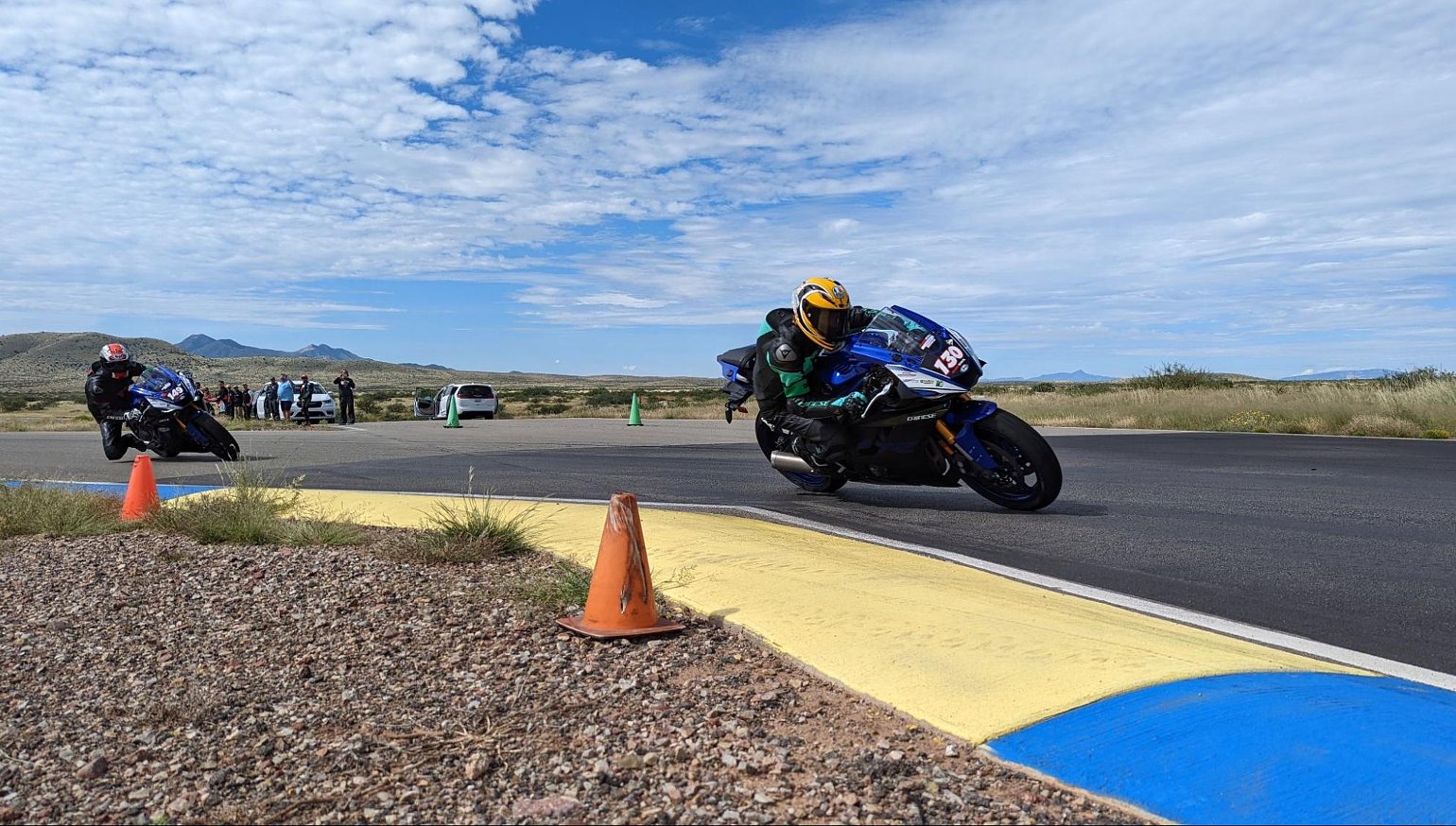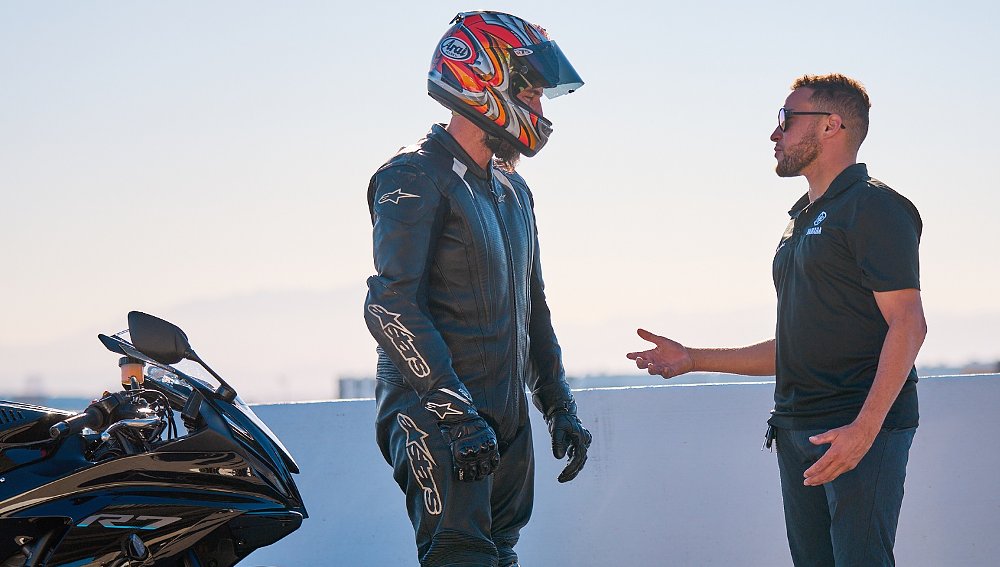Safer, Faster. The Yamaha Champions Riding School believes in that sentiment so much it is spelled out on the sleeves of their leathers and mentioned over and over again in their lessons. In most minds, “faster” and “safer” exist at opposite ends of the spectrum.
Yet for the YCRS crew it isn’t an “either/or” scenario, but rather that going faster is actually the product of riding safer. Don’t quite follow yet? That’s no problem, because the two-day ChampSchool and ChampStreet track-day courses are designed to drive home the philosophy on the bike and in the classroom.
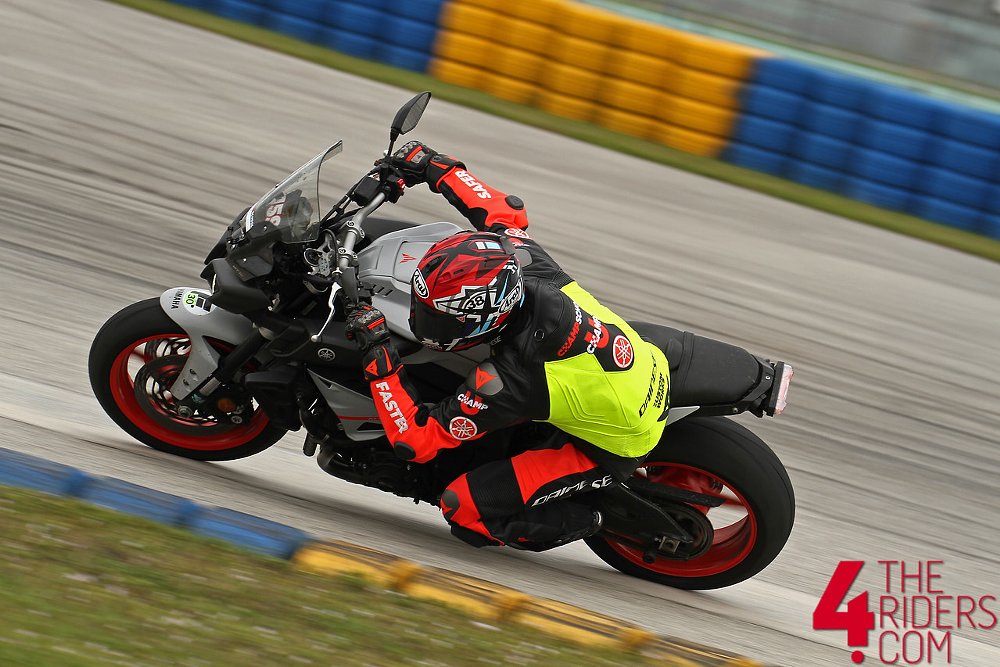
As you may recall, back in July I completed the digital ChampU training course and wondered if the online training could replace the “IRL” (in real life) training of the YCRS ChampSchool. It turns out, this is also not so easily defined as an “either/or” scenario. Let's take a look at the advantages and disadvantages of both approaches.
A digital edge: Where and how online training has its advantages
All students who sign up for a YCRS ChampStreet or ChampSchool course also get the added benefit of the ChampU online course included in their tuition. The YCRS strongly encouraged all to partake in that ChampU learning before the track-day course, but when asked for a show of hands to see who had taken advantage of it, very few were raised. In my mind, this is a shame because my time spent in ChampU did help prepare me in several ways to maximize my time in person with the YCRS staff and on track.
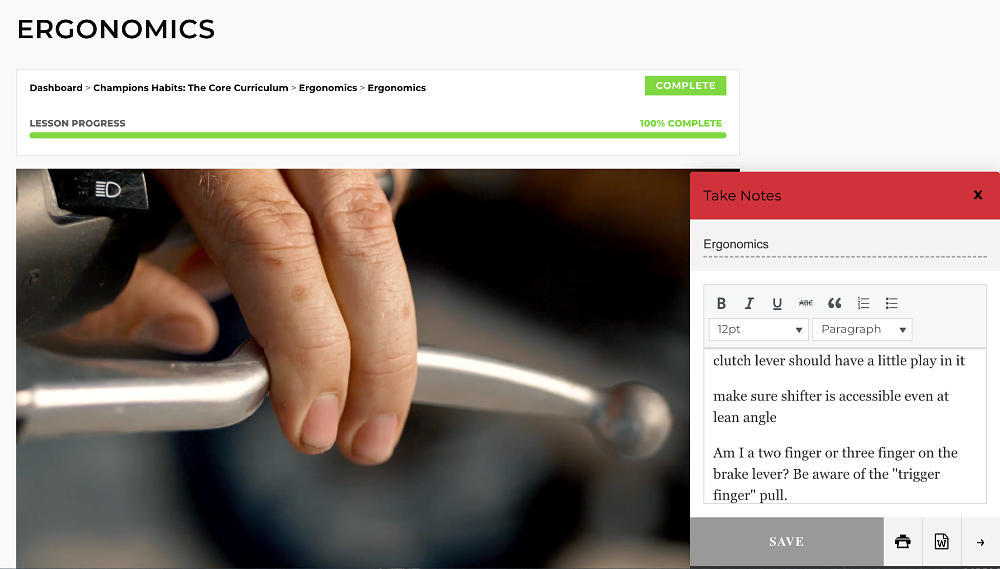
First, when I arrived at Inde Motorsports Ranch I immediately got acquainted with my rental Yamaha YZF-R6 thanks to the “Ergonomics” module in ChampU. While I might be accustomed to dialing in rider controls immediately, due to the nature of being a Common Tread contributor, the ChampU course was a good reminder to adjust settings early and ask for help right away. Making sure a bike is rideable and formatted to you specifically is key when trying to find that precious “first 5%” being taught during braking drills, and having a bike that is improperly set up means you may miss out on some very crucial lessons during training.
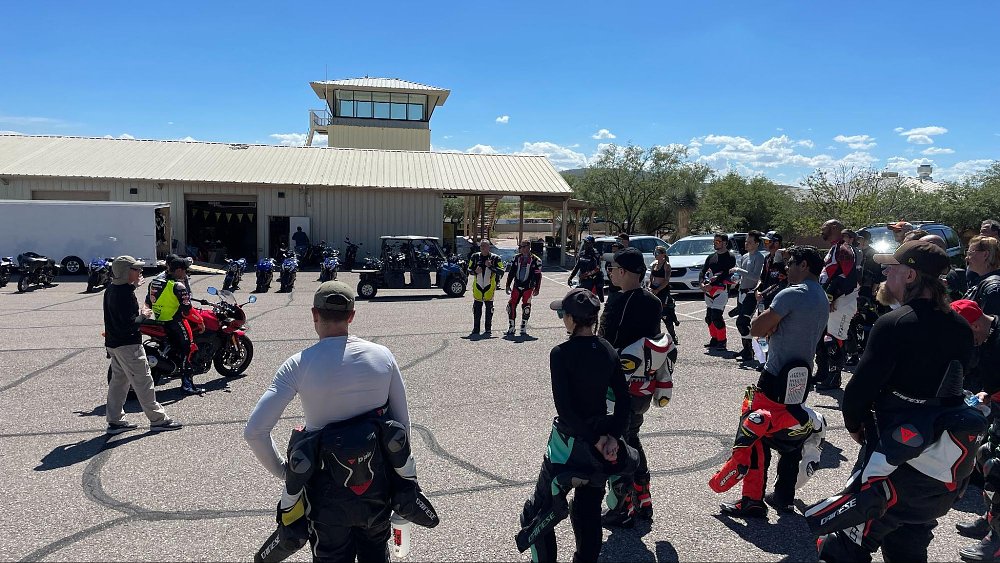
Next, the ability to pause, take notes, rewind, and overall really focus on lectures via the ChampU system had some distinct advantages over the in-person training. This was particularly the case when being outside the classroom while the YCRS staff were demonstrating certain lessons. Environmental factors such as loud wind, the noise of the motorcycle engines, being spaced out amongst a crowd of students and unable to see or hear, the hot sun beating down on me, and other distractions actually make the learning process in-person far less effective compared to the ChampU training. I normally would probably not notice these minor set-backs, but being so acutely aware of how much better I can absorb the lesson via the pre-scripted, audio recorded, and rehearsed demonstration made me critical of which avenue of learning served me better. Not to mention that some of the demonstrations were visually more impactful through the videos. Whether it was offering an aerial drone view of the “MPH = Radius” lesson or the danger of the double yellow during “Umbrella of Direction” lesson, the videos were simply a step above of what could be conveyed in person.
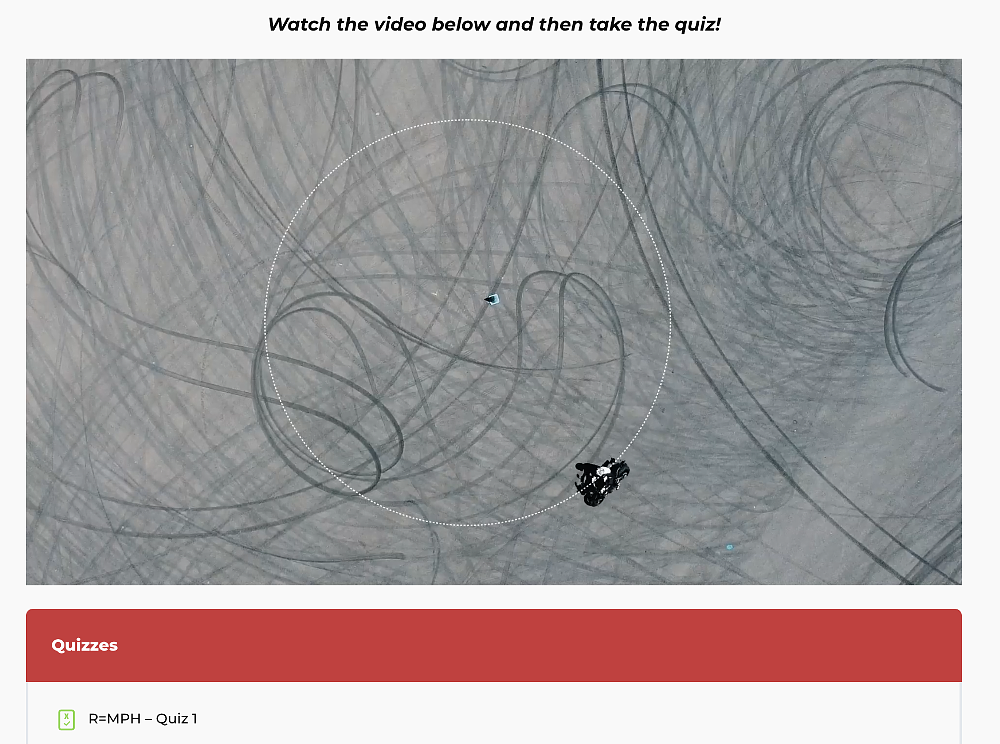
Then there is of course the distraction of the bike and the riding itself, which sounds contrary when considering this is, after all, a “riding school.” Allow me to explain. The first session hopping on the bike led to a complete abandonment of all the lessons we were taught in the morning. Instead of focusing on the “100 points of grip,” I was instead chasing my peers and completely overwhelmed by learning a new track. The YCRS crew are wise to this “Squirrel!” mentality however and helped lead me on some laps and back to the lessons at hand. They also sprinkled reminders throughout the day that we are here to hone our skills, not to prove how fast we are. Once settled in and more comfortable with my bike and surroundings, the ChampSchool IRL training began to pick up where the ChampU lessons left off.
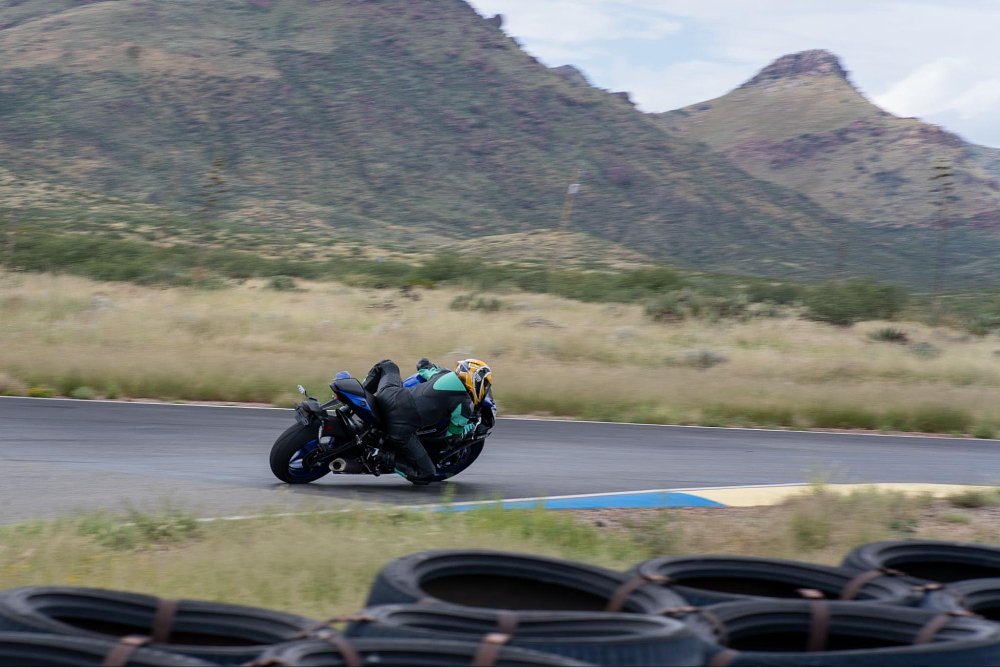
In-person is priceless: Why rider training is irreplaceable
Have you ever tried an online yoga class before? Whether it is through Zoom or that fancy new smart Mirror home gym device, it still can’t quite take the place of being face-to-face with an instructor. They might be there live-streaming to you, and they might instinctively know to call-out common bad form blunders, but there’s no getting around the fact they have dozens of students logged in and they can’t really give you immediate feedback to fix your individual problems.
So it goes for the vital importance of the in-person rider coaching you will get at the YCRS ChampSchool. While I did practice some of the video braking drills at home from ChampU, it turns out my “smooth last 5%” of brake application was seriously lacking in the eyes of my YCRS coaches. In the vacuum of my backyard on my dirt bike I didn’t know any better, but with their hawk eyes trained on my R6 fork rebound, the YCRS coaches were quick to let me know there was plenty of room to improve here. Furthermore, with a hands-on approach they could really help me understand the “feel” I was lacking with some practical push and pull exercises on the bike while parked.
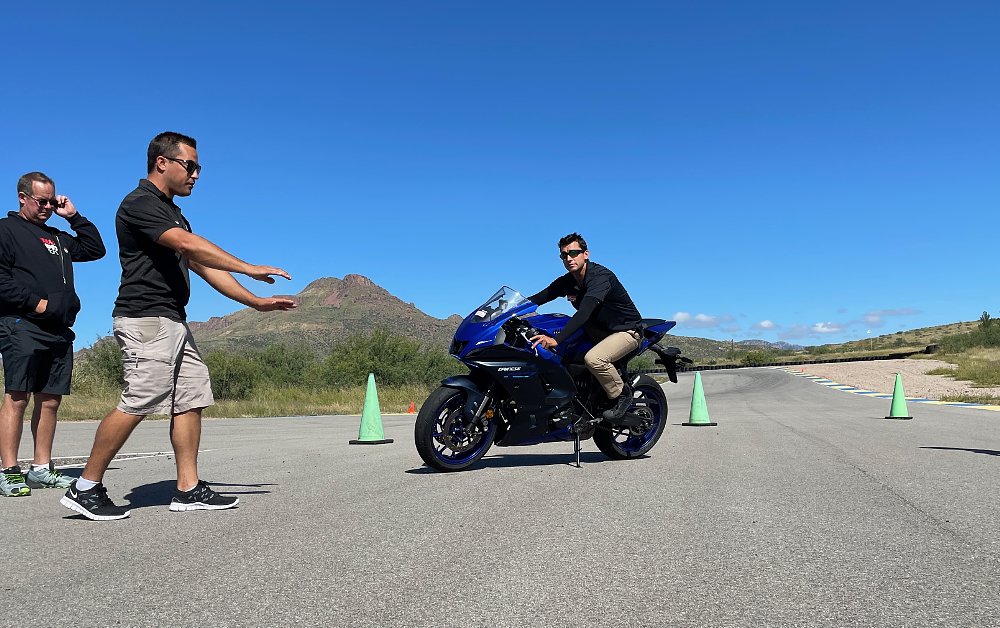
The YCRS ChampSchool curriculum will cover techniques for trail braking, downshifting, progressive suspension loading, body position, and rear braking but their emphasis will be on the theory and application of these techniques. Their “Core Champ Habits” are the theories in which these techniques live and making sure riders understand the how and why of these skill sets is paramount in both ChampSchool and ChampU training. When it comes to the explanation and demonstration of these lessons, there is very little difference between the online course and the in-person training, but the real divergence is in the individualized coaching tailored to your speed and skill level.
For example, there is the lead and follow drill, which is a staple of any track-day instruction but ChampSchool takes it to another level. My rider coach Eziah “EZ” had composer's hands as he signaled to me to “go go go” and “slow slow slow” through the tricky corners of Inde Motorsports, and with experienced intuition EZ would level up the pace without overwhelming our progress. It’s also noteworthy that the YCRS makes sure all tail lights are visible at their track days. Normally tail lights are considered a no-no and covered up first thing in tech inspection at the usual track day, but for the purposes of training, being able to actually see how long EZ holds that brake on while trail braking into a corner was crucial in helping my gauge and hone my skills at trail braking too.
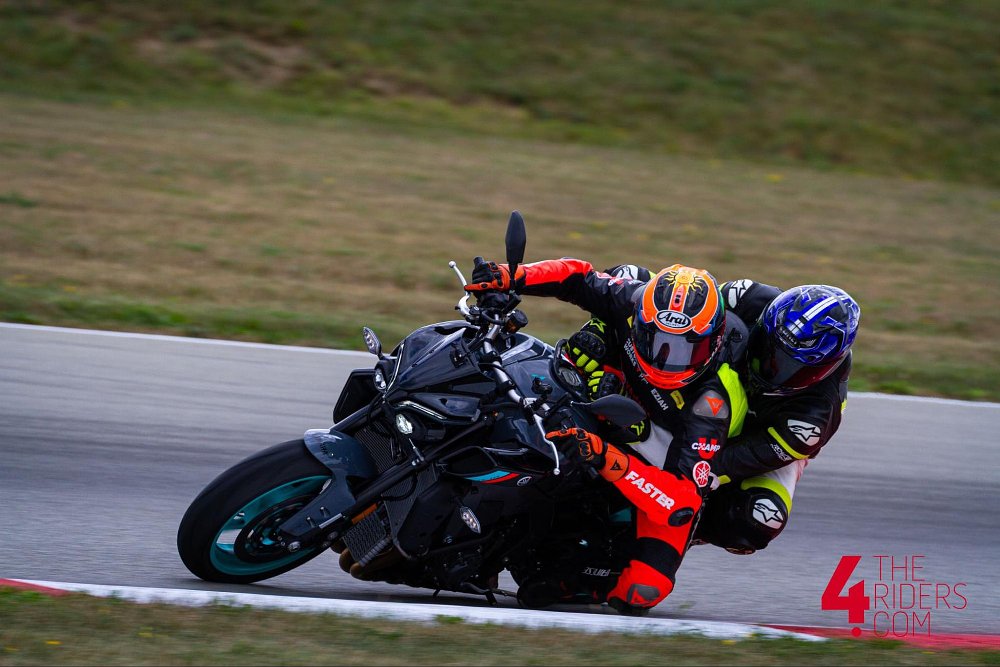
For those brave enough to do it, the two-up ride onboard with EZ is also a learning experience that cannot be replicated through an internet portal. To tangibly feel the rapid acceleration and deceleration a professional rider is capable of will quickly put into perspective just how much farther you can push on the motorcycle. To be able to do it at just a fraction of what EZ demonstrated would make me seconds a lap faster. You might be able to find on-board footage of laps at a racetrack online, but it is just a pale imitation of what can be absorbed from the visceral in-real-life experience.
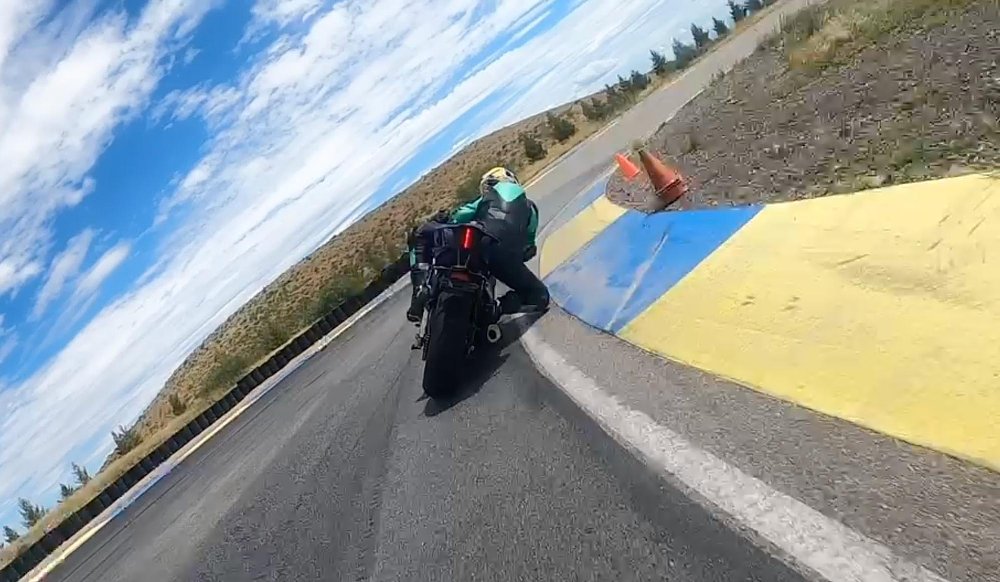
That doesn’t mean, however, that the good ole POV video doesn’t have its proper place in training. Each day every student was filmed on a one-lap sprint that would later be analyzed by YCRS staff, sometimes in front of the whole class in what we affectionately called “the hot seat.” This wasn’t your average POV video, though, as the YCRS instructor behind the lens would ride on the appropriate race line the entire lap and as students entered and left the frame of the video we could all see where their lines on the track would go completely amiss. With taillights engaged, we could see if they were braking too soon or too late, if they were dead-on the apex or wide, and all the tell-tale signs of body positioning that could hinder future progress. While I have plenty of footage sitting at home from my own track days, a rider instructor with the camera and a team of analysts that happen to be pro national racers are where the ChampSchool is clearly a cut above my usual efforts with the Go Pro.
This or that, either or
At the end of all this training, whether it is online with ChampU or in the saddle with ChampSchool, I would say at worst you can’t go wrong with choosing either and at best you will benefit greatly with both.
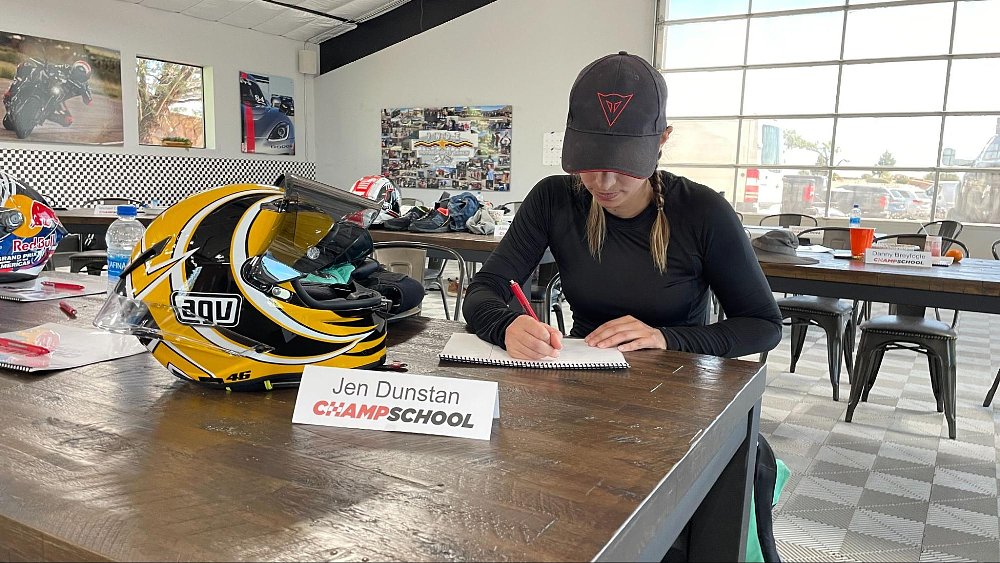
Being able to check-off topic lessons in ChampU ahead of the track-day training, and then to reference it all again afterwards is a great added bonus over most other schools. Even for a copious note taker like myself, I was able to fill in gaps again thanks to ChampU. I still maintain that online training cannot be a one-to-one true replacement to in-person rider training, but the online course did surprise me in its effectiveness and its ability to better communicate certain lessons.
It has to be said that the in-person ChampSchool two-day course is very costly at $2,495. The YCRS website explains this price tag is expensive because they “employ the best coaches in the country at the best facilities.” Your tuition will include gate fee, YCRS notepad, grazing breakfast spread, free lunch, snacks, water and a goodie “graduation” bag at the end of the course. If you need to rent a bike or gear, it is available at additional cost, or you can bring your own bike and gear. The more affordable one-day ChampStreet course ($495) will cover a lot of similar topics but misses out on the day-two lessons that are also omitted from the ChampU curriculum. To give a little preview, the second day really dives deeper into strategies that are going to best serve the dedicated track day rider — deciphering a track quickly, identifying the vital points and slowest points, addressing the three kinds of corners and riders, and more. For the ChampGrad school that is only available to students who have taken the ChampSchool, the dangled carrot of video review plus on-board data made me ooh and aah. But, for the rider not committed to the racetrack, these added lessons may not hold the same value and weight.
Naturally, the ChampU tuition of $49.95 is much more accessible to all. It might even be more relevant to all, too, as its lessons equally benefit the street or track rider. The “faster, safer” motto isn’t just a racer thing, it’s a mantra for every motorcyclist, and it's a philosophy that drives every move from the Yamaha Champions Riding School. It all comes down to mastering control — control of your bike, control of your technique, control of your mental state. The YCRS hands you the ability to choose that control, in whatever scenario might work best for you. Either or, “faster, safer,” ChampU or ChampSchool — the choice is up to you.




